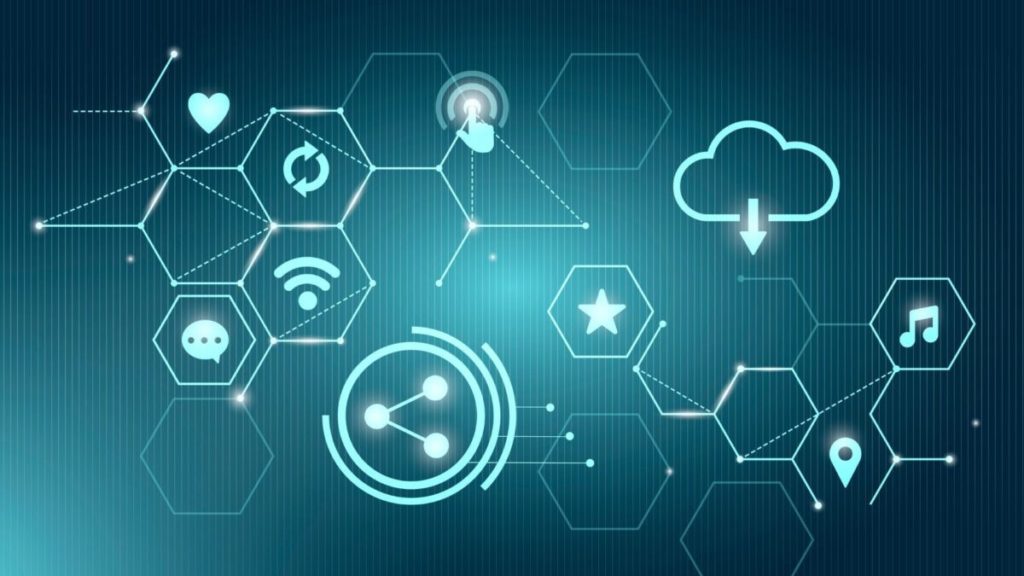Emerging technologies are revolutionizing the field of hybrid energy systems, offering innovative solutions to meet the ever-growing demand for renewable and sustainable energy sources.
With the increasing awareness of climate change and the depletion of fossil fuels, researchers and industries are turning towards alternative energy sources such as solar, wind, hydrogen fuel cells, and advanced battery technologies.
These emerging technologies have the potential to transform the way we generate, store, and distribute energy, making hybrid energy systems more efficient, cost-effective, and environmentally friendly.
We will explore some of the latest innovations and trends in emerging technologies for hybrid energy systems, highlighting their features, benefits, and future prospects.
Advanced energy storage systems
Hybrid energy systems rely on advanced energy storage technologies such as lithium-ion batteries, flow batteries, and other innovative storage solutions to optimize energy usage and reduce waste.
These advanced storage technologies allow for the efficient storing and retrieval of energy, ensuring that the system can operate at peak performance and reduce the need for excessive energy generation.
For instance, lithium-ion batteries can store excess energy generated by renewable sources such as wind and solar, and release it when needed to power homes and businesses.
Flow batteries, on the other hand, use a liquid electrolyte solution that is stored in tanks, allowing for long-duration energy storage and release.
By leveraging these technologies, hybrid energy systems can minimize energy waste, reduce the strain on the grid, and provide a reliable and sustainable source of energy for users.
These storage solutions can be scaled up or down depending on the specific needs of the system, making them highly versatile and adaptable.
Overall, advanced energy storage technologies are a key component of hybrid energy systems, enabling the efficient and effective use of energy and supporting a more sustainable energy future.
Artificial Intelligence (AI) and machine learning
AI and machine learning are being used to optimize energy consumption, predict energy demand, and improve the efficiency of hybrid energy systems.
AI and machine learning are being leveraged to optimize energy consumption, predict energy demand, and improve the efficiency of hybrid energy systems.
With the ability to analyze vast amounts of data and identify patterns, AI algorithms can pinpoint areas of inefficiency in energy use and suggest corrective actions.
By using historical data and weather forecasts, machine learning models can predict energy demand and optimize the scheduling of renewable energy sources, such as wind and solar power.
This can help reduce energy waste and minimize the need for fossil fuels.
AI-powered optimization algorithms can be used to configure hybrid energy systems, ensuring that each component is operating at its maximum efficiency and minimizing overall energy consumption.
With the help of AI and machine learning, energy management is becoming more efficient, cost-effective, and sustainable.
Internet of Things (IoT)
IoT sensors and devices are being integrated into hybrid energy systems to monitor and control energy usage, predict energy demand, and optimize energy efficiency.
The integration of IoT sensors and devices into hybrid energy systems is a important step towards optimizing energy efficiency and predicting energy demand.
With the help of IoT technology, hybrid energy systems can now monitor and control energy usage in real-time, providing actionable insights that can help building owners and managers make informed decisions about their energy usage.
For instance, IoT sensors can be installed in HVAC systems to monitor temperature and humidity levels, and adjust the system accordingly to maintain optimal conditions while minimizing energy waste.
Similarly, IoT devices can be integrated into lighting systems to monitor usage patterns and adjust lighting levels to match occupancy levels, resulting in significant energy savings.
IoT sensors can monitor energy usage patterns and predict energy demand, allowing building owners and managers to adjust their energy usage accordingly and optimize energy efficiency.
Overall, the integration of IoT sensors and devices into hybrid energy systems is a game-changer for energy management, providing actionable insights that can help building owners and managers optimize energy efficiency, predict energy demand, and save money on energy costs.
Blockchain and decentralized energy trading
Blockchain technology is being explored for decentralized energy trading and peer-to-peer energy sales, which can optimize energy consumption and reduce energy waste.
Blockchain technology has the potential to revolutionize the way we trade and sell energy, particularly through the use of decentralized energy trading platforms.
By leveraging blockchain’s secure, transparent, and tamper-proof nature, these platforms can enable the creation of a decentralized energy market where individuals can buy and sell excess energy directly with one another.
This peer-to-peer energy sales can help to optimize energy consumption and reduce energy waste by allowing individuals to trade their excess energy with those who need it.
For example, households with solar panels can sell their excess energy to their neighbors who lack solar panels, thereby reducing the overall energy consumption and carbon emissions of the community.
Moreover, blockchain technology can also help to eliminate the need for intermediaries such as energy brokers and utilities, resulting in cost savings and a more efficient energy market.
With the help of smart contracts, the trading process can be automated and easily tracked, ensuring a secure and transparent exchange of energy.
Overall, the integration of blockchain technology into energy trading and sales can create a more efficient, secure, and sustainable energy system for everyone.
Hydrogen fuel cells
Hydrogen fuel cells are being explored as a potential solution for clean and efficient energy storage and generation, particularly for transportation and industrial applications.
Hydrogen fuel cells are being extensively explored as a promising solution for clean and efficient energy storage and generation, particularly in the transportation and industrial sectors.
These cells offer a transformative alternative to fossil fuels, boasting zero emissions, impressive energy density, and reduced reliance on non-renewable sources.
With their ability to convert hydrogen into electricity, fuel cells present a game-changing opportunity to revolutionize the way we power our daily lives.
In transportation, hydrogen fuel cell electric vehicles (FCEVs) offer a pollution-free driving experience, mitigating the detrimental impacts of fossil fuel emissions and reducing our reliance on finite resources.
Moreover, FCEVs have the potential to achieve significant cost savings compared to traditional gasoline-powered vehicles, with fuel cell technology expected to become increasingly competitive as the technology advances and economies of scale are achieved.
In industrial applications, hydrogen fuel cells offer a reliable and efficient power source for a wide range of sectors, including telecommunications, data centers, and healthcare facilities.
By harnessing the power of hydrogen, these industries can minimize their environmental footprint and mitigate the risks associated with traditional power sources.
The modular design of fuel cells allows for easy integration into existing infrastructure, further facilitating their adoption.
As the world grapples with the challenges of climate change, the development of hydrogen fuel cells represents a significant step towards a more sustainable future.
With their immense potential for clean energy generation and storage, these cells are poised to transform the way we power our lives, driving us towards a greener, more resilient tomorrow.
Microgrids
Microgrids are becoming increasingly popular as a way to optimize energy usage, reduce energy waste, and provide energy resilience, particularly in remote or off-grid locations.
Microgrids are a rising star in the world of energy management, offering a cutting-edge solution for optimizing energy usage, reducing energy waste, and ensuring energy resilience, particularly in remote or off-grid locations.
These self-sufficient energy systems rely on a combination of distributed energy sources, such as solar, wind, and energy storage, to serve the energy needs of a specific area or building.
By leveraging advanced control systems and smart grid technologies, microgrids can maximize the efficiency of energy production and distribution, minimize energy losses, and provide a reliable and stable energy supply.
One of the key advantages of microgrids is their ability to reduce energy waste and optimize energy usage.
By leveraging real-time data and analytics, microgrids can identify areas of inefficiency and adjust energy production and distribution accordingly.
This can lead to significant cost savings and a reduction in greenhouse gas emissions.
Microgrids can provide energy resilience in the event of a grid outage or other disruptions, ensuring a consistent and reliable energy supply.
In remote or off-grid locations, microgrids can be particularly beneficial, as they can provide a reliable energy source where traditional grid infrastructure is not available.
These microgrids can be powered by a combination of renewable energy sources, such as solar and wind, and energy storage technologies, such as batteries.
This ensures a stable and reliable energy supply, even in areas with limited access to traditional energy sources.
By leveraging advanced technologies and control systems, microgrids can maximize the efficiency of energy production and distribution, minimize energy losses, and provide a reliable and stable energy supply.
Smart buildings and smart homes
Smart buildings and smart homes are being equipped with advanced energy management systems that can optimize energy usage, reduce energy waste, and provide energy resilience.
Smart buildings and smart homes are transforming the way we live and work, with advanced energy management systems that are optimized for energy efficiency, resilience, and waste reduction.
These systems leverage cutting-edge technologies such as artificial intelligence, the Internet of Things (IoT), and machine learning to optimize energy usage, reduce energy waste, and provide energy resilience.
With the ability to monitor and control energy usage in real-time, these systems can identify energy-intensive areas of the building or home and adjust settings accordingly, such as adjusting temperature settings, lighting, and appliance usage to optimize energy efficiency.
Advanced energy management systems can predict energy demand and adjust energy usage accordingly, ensuring a stable and reliable energy supply.
By integrating renewable energy sources such as solar and wind power, these systems can also provide energy resilience and reduce dependence on non-renewable energy sources.
With the ability to track energy usage and identify areas for improvement, these systems can help building and home owners reduce their carbon footprint and contribute to a more sustainable future.
Virtual power plants
Virtual power plants (VPPs) are being developed to optimize energy consumption, reduce energy waste, and provide energy resilience by pooling and managing distributed energy resources (DERs) such as wind, solar, and energy storage.
Virtual power plants (VPPs) are being developed to optimize energy consumption, reduce energy waste, and provide energy resilience by pooling and managing distributed energy resources (DERs) such as wind, solar, and energy storage.
VPPs leverage advanced energy management software and communication technologies to aggregate and control DERs, ensuring that the right amount of energy is generated or stored at the right time to meet demand.
This results in more efficient energy use, reduced greenhouse gas emissions, and a more resilient energy grid.
VPPs can provide grid services such as frequency regulation and voltage support, further supporting the stability and reliability of the grid.
By pooling and managing DERs in this way, VPPs are creating a more sustainable, efficient, and resilient energy system for the future.
Want More? Dive Deeper Here!
Hey there! If you’re the type who loves going down the rabbit hole of information (like we do), you’re in the right spot. We’ve pulled together some cool reads and resources that dive a bit deeper into the stuff we chat about on our site. Whether you’re just killing time or super into the topic, these picks might just be what you’re looking for. Happy reading!






